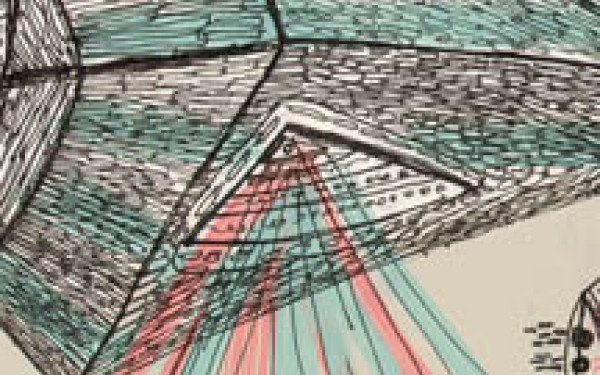A Look Back at the 1960s Through Art and Music
A Review of the Montreal Museum of Fine Arts’ Revolution Exhibit
Time travel may still remain an impossible feat to achieve, but the Montreal Museum of Fine Arts did their best in their latest art exhibit, Revolution.
The exhibit highlights the ideas and ambitions of the late 1960s through music, film, design and fashion.
My journey began at the Maxwell Cummings Auditorium, where the entrance was surrounded by Beatles memorabilia related to the Sgt. Pepper’s Lonely Hearts Club Band album.
I wasted no time as I continued to make my way over to the next room, filled with images of innovative hair styles from the 60s, colorful clothing, books about how to achieve peace and, of course, many many vinyl records.
Visitors were allowed to hold some of the records in their hands, and read the notes on the backs of them. Guests admired several album covers and others even recounted memories from their past; one older couple recounted the time that they had experimented with LSD while listening to Pink Floyd’s 1968 album A Saucerful of Secrets.
The next room was dedicated to the youth who had marched through the streets of the United States during 1969 in protest of getting drafted for the Vietnam War.
“Why don’t you tell one of the senators to send their sons to ‘Nam instead of us,” an unknown protester angrily yelled to a police officer in a recording that was heard from nearby speakers.
The rest of the room was filled with picket signs and the uniforms of a dead soldiers. Screen that showed bits of video footage of these protesting teenagers.
This room would have been more interesting if it had some additional films, and objects that belonged to different political events at the end of the 1960s. For instance, exposing audio excerpts and pictures from the 1968 Civil Rights Act, would have highlighted the importance of equal housing opportunities regardless of race, and religion.
At the end of the room, I walked through a set of black velvet curtains only to find myself surrounded by Woodstock and the Isles of Wight festival memorabilia.
As I set myself on a patch of synthetic grass to look at the panoramic screen that was showing a Woodstock concert, I felt as if a sense of connection was created between all generations present in this particular room. Each concert that was shown on the screen gathered the youths and the adults together in this one room to sit down and enjoy the sights and sounds.
Older people in the audience felt as if they were back in their youth as they quietly sang along to “Bad Moon Rising” by Creedence Clearwater Revival and “Pinball Wizard” by The Who.
After enjoying a couple of tunes, I walked through another set of black curtains that led to the last part of the exhibit. A wide plain white room that had seemingly random objects scattered about it.
After a moment of taking it all in, it became clear that this room highlighted themes of consumerism, and the American West Coast.
Some items had a significant meaning such as exposing some memorabilia from Expo 67 and the famous 1969 television taping of the first moon landing. Other objects were just placed in the room for the sake without explaining its importance related to the themes such as a chair designed as if someone took a bite out of an apple and a lamp that was shaped like a pharmaceutical tablet.
I would have enjoyed the exhibit more if the significance behind each object that was presented had been explained a little better. Some of the objects were just put on display without offering any explanation such as the sign “Vidal Sassoon” or a picture of the first Beatles manager, Brian Epstein.
Regardless, the Revolution exhibit did a great job at allowing visitors to learn and remember to what is was like to have lived at the end of the 1960s.
Revolution // Montreal Museum of Fine Arts // June 17 – October 9 2017 // Ages 13-30 $15 OR ages 31+ $23






_600_375_90_s_c1.jpg)